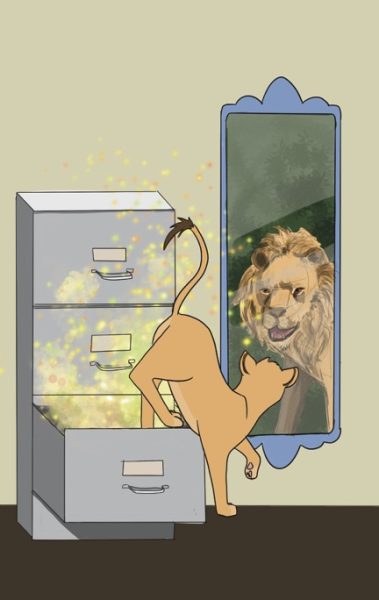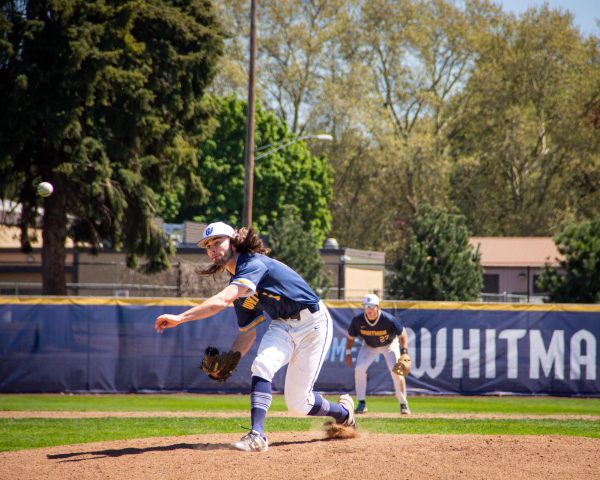Tommy’s Dutch Lunch
October 17, 2017
In 1923, long before tasting rooms and artisan boutiques came to dominate Main St., a 16 year old boxer named Tommy Gardner made his professional debut. The bout was hosted in the Keylor Grand Theatre, part of which still stands at the intersection of Fourth and Alder. Gardner won by decision over Danny Edwards, another young Walla Walla fighter, claiming a $15 dollar purse.
So began the legend of Terrible Tommy, arguably the best boxer Walla Walla’s ever produced.
Standing at 5’5’’ and weighing a wiry 118-pounds, Tommy fought in the bantam division. Throughout the twenties he worked the local circuits, toiling away for what would be chump change to the boxers of today. In a 1978 article in the “Union Bulletin,” Gardner said that the most he had ever received for a fight was $300 dollars. For perspective, Floyd Mayweather is estimated to have taken home upwards of $250 million from his August bout with Conner Mcgregor, an inflated sum, but a massive increase in the profession’s pay regardless.
Six years after his debut, Gardner beat Tommy Thank, a 5’10’’ lad from Wallace, Idaho, to take possession of the Northwest bantamweight title. In doing so, he hit a ceiling. Across the Northwest, there was not a bantam who could beat him.
At this point, an older man may have hung up the gloves, satisfied to be a big fish in a small pond, but Tommy was still only 22 years old and at the top of his game. In the same UB article, he said of his abilities at the time, “I could have fought the best there was in the country, but there wasn’t enough money in Walla Walla or Spokane to get them here.”
Tommy’s father, an ardent supporter present at every bout, decided it time for a change of scenery. He borrowed $500 dollars and the two headed south to Los Angeles.
Much as before, Tommy worked the circuits, fighting to make a name for himself in a new, more competitive arena. Come August of 1930, Tommy was thriving. He was in the finals of a tournament, slated to compete against yet another Tommy, this time with the last name of McGough, a bantamweight out of New York.
Two days before the fight, Tommy came down sick. He complained of a fever paired with a strange sensation in his legs and arms and cancelled the fight. Shortly after, he was told he had polio.
For the first six months following his diagnosis, he was unable to walk, let alone box. He returned to Walla Walla where, in 1934, he opened a small restaurant on W. Pine St., naming it Tommy’s Dutch Lunch.
The diner remains in operation to this day, making it Walla Walla’s longest running restaurant. On the Tuesday before four day break, my editor and I went for a meal, Tommy’s story fresh in our minds.
The interior is unassuming. White walls, well-worn wood surfaces, red vinyl booths. Notably, we are the only Whitman students, the rest of the patrons are much older and appear to be locals. A poster featuring Tommy in his Sunday best hangs on the wall, the caption reads:
“Tommy Gardner, claimant of the bantam championship of the pacific coast, battles ‘Newsboy’ Brown in Hollywood.”
We take a table in the back corner. A few flies buzz about, strangely fixated on our booth. A waitress comes up and, seeing me flick on a fan, explains we’ve chosen to sit in the flies’ favorite corner and asks if we’d like to move. Already sunken down into our booth, we decline; anyways, the flies, much as everything here, feel too established to alter, simply a part of the experience. She hands us a pair of menus, both emblazoned with a pair of red boxing gloves. We order coffee and ask for a few minutes to glance over the options. The fare is typical of an American diner; breakfast and burgers, filling free of frills.
Our waitress returns, pours more coffee without a question, and asks for our orders. My editor goes with a Denver Omelette, and I with the veggie, both served with hashbrowns. Egged on by my company and a sense of obligation to legacy, I add on a sandwich, the Terrible Tommy, a bacon cheeseburger served with a salad. I ask for a vinaigrette, to which my waitress answers simply,“No, we don’t do anything like that here.”
Not much is more representative of Tommy’s than that line. Our food, when it arrived, was simple and quintessentially American.
I downed my omelette with ease, but found the heft of the Terrible Tommy to be too much for me. Half a burger left sitting on the table, we asked for the check and a to-go box.
After taking a few minutes to sit contentedly, wondering whether we were expected to pay at the table or register, we went for the latter, and mosied on up to the door side cashier. Handing his credit card over, my editor asked if any descendants of Tommy were still employed here. The cashier replied no, explaining that ownership has changed hands several times since Tommy’s initial sale in 1971. Following up, he asked if there was anyone we could talk to about the restaurant’s history. Almost bashfully, she said, “Oh, I don’t know,” and suggested that the manager might be around if we came back some other time.
I haven’t yet found time to return, but I can take some solace in the fact that Tommy’s isn’t going anywhere. That’s part of its humble charm–its steadfast nature. A meal today is likely no different than a meal at Tommy’s ten years ago, or ten years from today.
It offers a stark contrast to many of the organic skewing, wine tourist targeting restaurants that line Main. The aim here is not to excite or surprise, but rather to simply serve, and do so with consistency. Tommy’s is the type of place where the menu never changes, where food always meets expectations, where the same customers come week after week. In Walla Walla’s wine-fueled evolution, Tommy’s has remained constant, a known, dependable entity since 1934. Not a single one of his descendants works here, yet the place still feels like a family affair. Here lies the beauty of its appeal, an experience that sturdily resists the tides of time, existing outside any particular era; the rare thing that you can return to after twenty years and marvel nostalgically, nothing has changed and indeed, when here, it feels perhaps nothing ever will.






